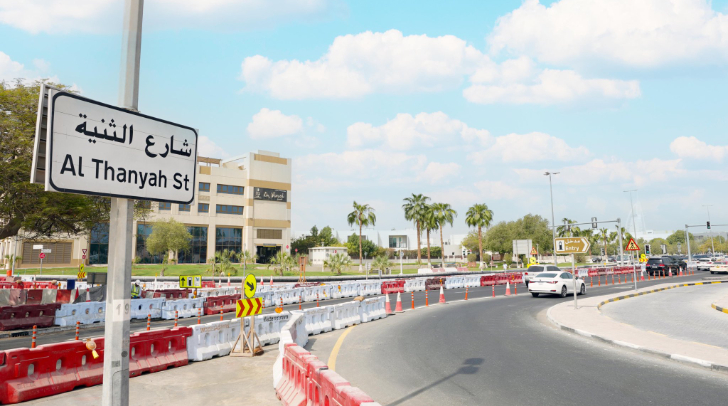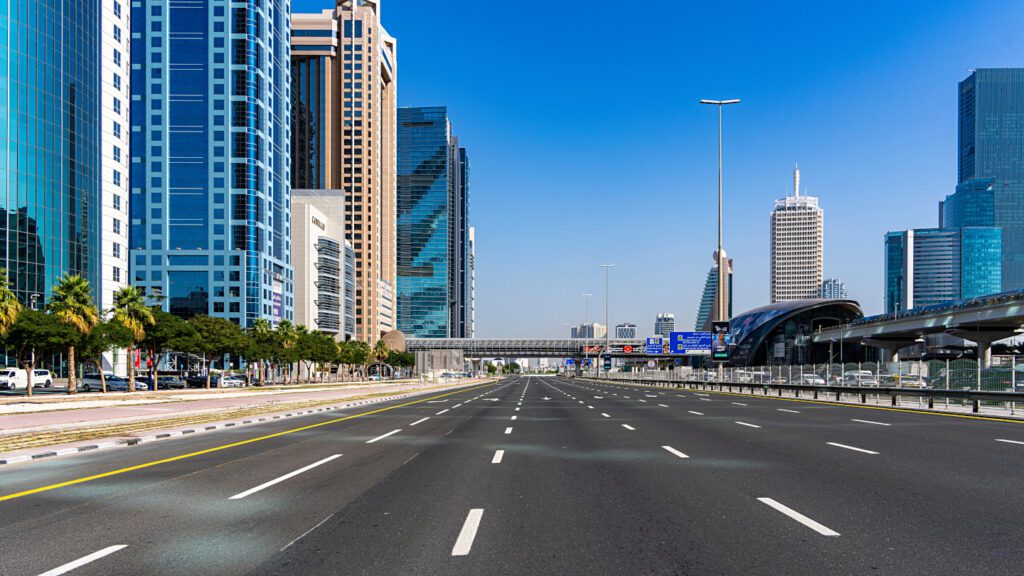Dubai’s Roads and Transport Authority (RTA) has launched a comprehensive traffic improvement initiative on Al Thanya Street, a vital corridor linking Sheikh Zayed Road and Al Wasl Road. This corridor is a crucial passage for commuters traveling between major residential and commercial hubs. The initiative aims to reduce congestion, improve safety, and enhance connectivity in one of Dubai’s busiest neighborhoods. By addressing both immediate traffic challenges and long-term urban planning goals, the RTA ensures that the city’s transport infrastructure evolves to meet the demands of a growing population.
Al Thanya Street carries a significant amount of daily traffic, including private vehicles, public transport, delivery trucks, and pedestrians. As Dubai continues to grow, traffic density in this corridor has increased, leading to delays, safety concerns, and commuter frustration. The RTA’s upgrades are designed to provide practical solutions that improve the experience for all road users.
Project Overview
Objectives
The Al Thanya Street upgrades aim to achieve several key goals:

Reducing traffic congestion: Upgrading key junctions, widening lanes, and installing modern traffic signals will streamline the flow of vehicles and minimize delays. The RTA is using advanced traffic engineering techniques to optimize junctions and improve throughput, particularly during peak hours.
Enhancing pedestrian safety: The introduction of new pedestrian crossings, elevated walkways, and safer sidewalks will make it easier and safer for residents and visitors to navigate the area. Pedestrian safety has been a core priority, considering the high volume of foot traffic along Al Thanya Street.

Improving connectivity: By enhancing road links and junctions, the initiative will create a smoother connection between residential areas, commercial zones, and main roads, reducing travel time and improving commuter efficiency.
Supporting sustainable transport: The upgrades encourage walking and cycling by integrating dedicated pathways and safer crossings, promoting eco-friendly commuting options in line with Dubai’s sustainable transport vision.
Key Components
The improvements being implemented on Al Thanya Street include:
Upgrading the roundabout: The roundabout on Sheikh Zayed Road’s service road connecting to Al Thanya Street is being redesigned to handle higher traffic volumes. Modern traffic management technologies, including adaptive signal systems, will be implemented to reduce congestion and improve traffic flow.
Constructing a signalized junction: A new signalized junction will be added at the intersection of Street 10 and Al Thanya Street. This junction will allow for smoother traffic distribution and reduce the waiting time for vehicles, especially during peak commuting hours.
Developing walkways and crossings: Pedestrian-friendly walkways and crossings are being built throughout the corridor. These improvements are designed to separate pedestrian traffic from vehicles, minimizing accidents and making it safer for walkers and cyclists.
Improved signage and lane markings: Clear lane markings and modern road signage will guide drivers effectively, reducing confusion and enhancing road safety.
Street lighting and visibility enhancements: Upgraded street lighting ensures visibility for both drivers and pedestrians, improving safety during nighttime travel.
These enhancements are scheduled for completion by early September 2025 and are part of the RTA’s broader strategy to maintain world-class transport infrastructure.
Impact on Local Communities
Residents of Umm Al Sheif and Al Manara
The new junction at Street 10 will significantly reduce travel distances and waiting times for residents moving between Umm Al Sheif and Al Manara. Shorter commutes will allow residents to save time, improve quality of life, and reduce the stress associated with traffic congestion.
Commuters and Drivers
Drivers traveling between Sheikh Zayed Road and Al Thanya Street will experience smoother traffic flow, reduced congestion, and shorter travel times. Advanced traffic monitoring systems will allow the RTA to respond quickly to changing traffic conditions, ensuring efficient management throughout the day.
Pedestrians and Cyclists
With new pedestrian crossings, elevated walkways, and safer sidewalks, pedestrians and cyclists will have a more secure and comfortable experience. This encourages walking and cycling, supporting sustainable transport initiatives while reducing the number of vehicles on the road.
Local Businesses
Improved traffic flow will make commercial areas along Al Thanya Street more accessible. Customers, employees, and suppliers will benefit from reduced travel times, potentially boosting local business activity and economic growth.

Strategic Importance
Al Thanya Street serves as a critical connection between Sheikh Zayed Road and Al Wasl Road, linking neighborhoods such as Jumeirah, Umm Suqeim, and Al Wasl. The upgrades are aligned with Dubai RTA’s long-term urban planning goals to ensure that infrastructure keeps pace with population growth and urban development.
By modernizing this corridor, the RTA ensures that future transport needs are anticipated and met. This includes accommodating more vehicles, improving safety for pedestrians and cyclists, and enhancing the overall commuting experience. The project also supports the broader urban vision of a connected, sustainable, and highly efficient city transport system.
Traffic Management and Technology Integration
The RTA is using smart traffic management technologies as part of the upgrades. These include:
Adaptive traffic signals: Signals that adjust in real-time based on traffic flow, reducing unnecessary delays and keeping traffic moving efficiently.
Traffic monitoring systems: CCTV cameras and sensors will provide data on vehicle movement, allowing the RTA to manage congestion and respond to incidents quickly.
Data-driven planning: Traffic patterns will be continuously analyzed to optimize lane allocation, signal timing, and pedestrian crossing intervals.
These technologies not only improve traffic flow but also reduce environmental impact by minimizing idling and vehicle emissions.
Future Benefits
Once completed, the Dubai RTA Al Thanya Street upgrades are expected to deliver long-term benefits:
Reduced congestion: Modern junctions, better signage, and upgraded roads will cut down travel delays, making commuting faster and more predictable.
Enhanced safety: Separating pedestrian and vehicle traffic, improving crossings, and implementing advanced lighting systems will reduce accidents and improve road safety for all users.
Sustainable transport promotion: Safe pedestrian walkways and cycling paths encourage eco-friendly commuting, contributing to Dubai’s environmental goals.
Economic growth: Improved accessibility and smoother traffic flow will benefit businesses along the corridor, encouraging more commerce and investment in surrounding areas.
Emergency response efficiency: Enhanced road design and traffic management will improve response times for emergency services, such as ambulances and fire trucks, ensuring safety in critical situations.
Environmental and Community Considerations
The RTA has carefully considered the environmental and community impact of the project:
Noise and air quality management: Measures have been implemented to reduce construction noise and dust, limiting disruption for local residents.
Green infrastructure: Landscaping along pedestrian pathways will improve aesthetics and provide a more pleasant environment for walkers.
Community engagement: Residents are being kept informed about construction schedules, alternative routes, and traffic diversions to minimize inconvenience.
Sustainable construction: The RTA is using environmentally friendly materials and methods wherever possible, reflecting the city’s commitment to sustainable urban development.

Long-Term Urban Planning Impact
The Al Thanya Street upgrades are more than just a traffic solution. They represent a step toward building a more organized, safe, and future-ready city transport network.
Urban mobility integration: The corridor improvements integrate with Dubai’s public transport system, ensuring smooth connections to metro stations, bus routes, and pedestrian networks.
Capacity for growth: The upgraded street is designed to handle increased traffic volumes in the coming years, ensuring the infrastructure does not become a bottleneck as the city grows.
Smart city alignment: These enhancements support Dubai’s smart city initiatives, using technology and data-driven planning to improve urban mobility and sustainability.
How the Project Will Improve Daily Commutes
Morning rush hour: The new signalized junctions will maintain smooth traffic flow, reducing bottlenecks during peak hours.
Evening traffic: Improved roundabouts and traffic signals will allow smoother exit from residential areas, reducing delays for evening commuters.
Weekend and leisure travel: Better connectivity will support traffic to shopping, recreational, and cultural destinations, enhancing convenience for residents and visitors.
Emergency services: Faster access and improved road design will allow emergency vehicles to respond more quickly, enhancing overall community safety.
Conclusion
The Dubai RTA Al Thanya Street upgrades are a milestone in the city’s ongoing efforts to modernize infrastructure and enhance urban life. The project addresses immediate traffic challenges while preparing the corridor for future growth.
These upgrades will reduce congestion, improve safety, promote sustainable transport, and strengthen connectivity between key neighborhoods. They demonstrate Dubai’s commitment to world-class urban planning, technological integration, and community-focused design.
When completed, Al Thanya Street will serve as a model corridor, showing how careful planning and modern infrastructure can transform urban transport. Residents, commuters, and visitors can look forward to a smoother, safer, and more efficient travel experience along this vital route, reflecting Dubai’s vision for a connected and sustainable city.
Do follow UAE Stories on Instagram
Read Next – Marhaba Launches Meet & Greet Services at Manchester Airport














